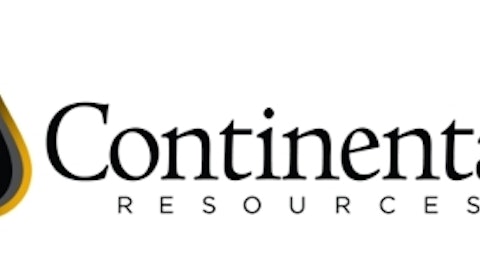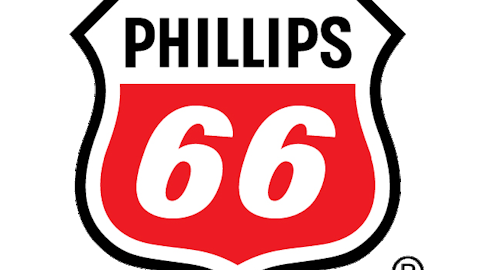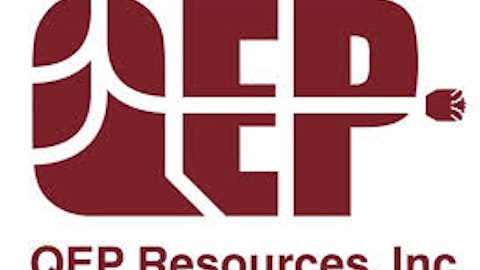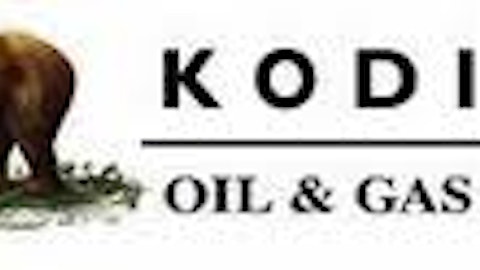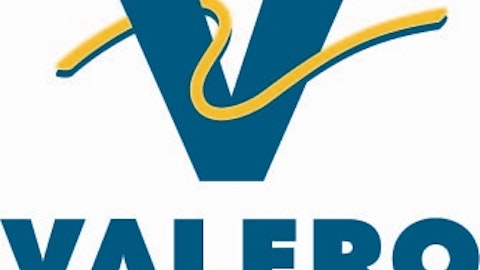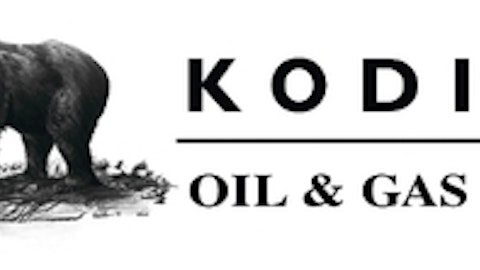Kodiak Oil & Gas Corp (USA) (NYSE:KOG) has shown excellent growth in production and revenue, though growth in earnings has not been commensurate. I will examine Kodiak Oil & Gas Corp (USA) (NYSE:KOG) as an investment in the context of the company’s recently announced preliminary operational data.
Kodiak Oil & Gas Corp (USA) (NYSE:KOG) operates primarily in the Williston Basin of North Dakota. The company has announced preliminary unaudited operational data for the fiscal year ended Dec. 31, 2012. The estimated total proved reserves as of Dec. 31, 2012 amounted to roughly 94.8 million barrels of oil equivalent (MMBoe) in comparison to 39.8 MMBoe as of Dec. 31, 2011. The 2012 number represents a 138% increase year-on-year and is made up of 80.9 million barrels of crude oil and 83.1 billion cubic feet (Bcf) of natural gas. The 2012 reserve mix consists of 85% crude oil together with 15% associated natural gas.

During the year, Kodiak Oil & Gas Corp (USA) (NYSE:KOG) spent approximately $810 million in capital expenditures related to drilling and completing new wells, inclusive of facilities on the surface and pipeline connections, compared to the guidance previously provided of $738 million. According to the company, the increased spending can be attributed to more wells drilled as a result of additional drilling efficiencies, non-operated activity, and unseasonably good weather during the fourth quarter. The drilling operations are continuing with seven operated rigs, four of which are in the Polar project area in southern Williams County, and one rig each in the Smokey and Koala project areas in McKenzie County and Dunn County.
Kodiak Oil & Gas Corp (USA) (NYSE:KOG) achieved average daily sales volumes of 18,200 barrels of oil equivalent per day (BOE/d) for the fourth quarter of 2012, representing an increase of 153% on sales volumes of 7,200 BOE/d for the same quarter of the previous year, and a 15% increase over sales volumes of 15,850 BOE/d in the preceding quarter. Crude oil made up 89% of fourth quarter 2012 sales volumes.
Average daily sales volumes of 14,400 BOE/d for the year 2012, represented 267% increase over average daily sales volumes of 3,900 BOE/d for the year 2011. The company states that it’s in the best ever financial position since its inception, with current liquidity of more than $400 billion made up of cash on hand and the un-utilized balance of its credit facility. This, combined with the expected cash flow generation from operations in 2013, should enable the company to execute its proposed drilling program. In addition, because of the increase in the reserve base, the company expects to enhance its revolving credit line in April 2013.
Kodiak Oil & Gas Corp (USA) (NYSE:KOG) has reduced well costs to a range of approximately $9.5 million to $10.2 million per well, and expects to bring costs down further because of increased drilling efficiency. The ongoing expenditure on infrastructure in the Williston Basin is resulting in more gas being sold and processed, and higher volumes of crude being transported by rail to points in the US and Canada where prices are strongest. Because of the proliferation of rail terminals and enhanced access to premium markets, the company is now experiencing historically low Williston Basin differentials, which are expected to continue and thus benefit all operators.
Another company that has done well in the Bakken Shale is Continental Resources, Inc. (NYSE:CLR), which has seen production grow just under 60% year-on-year to an average of 106,831 barrels of oil equivalent per day by the end of the fourth quarter. It’s the largest producer in that area, but is now moving into the South Central Oklahoma Oil Province, which includes three of the top oil-producing counties in Oklahoma. It’s an area rich in liquids and the company has around 200,000 acres, of which 20% is held by production.
Harold Hamm, Continental Resources, Inc. (NYSE:CLR)’ CEO, founder and Chairman, felt that crude oil would be more profitable than natural gas. He shifted the company’s resources to shale deposits that were suited to crude oil production, and the Bakken was a natural fit. Continental Resources, Inc. (NYSE:CLR)’ management continues to be bullish in the Bakken and believes that there is potential for over 24 BBoe recoverable. Even if this figure is over-optimistic, there is still plenty of oil to be produced from this play. I believe Continental Resources, Inc. (NYSE:CLR) is an excellent trade-off between risk and reward in this sector.
Phillips 66 (NYSE:PSX) recently signed a 5-year contract with Global Partners LP, which will improve transportation infrastructure. “Global has established a ‘virtual pipeline’ for the reliable transportation of Bakken crude,” said Tim Taylor, Executive Vice President, Commercial, Marketing, Transportation & Business Development of Phillips 66 (NYSE:PSX). “Our five-year agreement with Global assures us long-term access to advantaged crude for our Bayway refinery through what we believe is a cost competitive origin-to-destination supply system to the East Coast.” Phillips 66 (NYSE:PSX) has a debt-to-equity ratio that is slightly higher than the industry average, but compensates with a strong operating cash flow of $4.3 billion. Refineries in the United States have been performing well by processing cheap U.S. oil, then selling at higher prices globally. The company could be affected by an economic downturn and a reduction in demand. However, I believe that U.S. crude will continue to be cheap, thus preserving operating margins, and I recommend the stock as a buy.
Kodiak has a simple business strategy that consists of drilling for oil in the Bakken and drilling for natural gas in the Green River Basin. However, despite the growth in revenue, earnings have not risen proportionately. But, to be fair, there were significant expenses that were outside of management’s control. Of the 10 analysts covering the stock, three have a buy rating, three have an out-perform rating, two are recommending accumulate, and only one analyst is neutral. I believe earnings growth will catch up with revenue growth. I recommend buying Kodiak Oil & Gas today.
The article Buy This Oil & Gas Stock Now And Ride It Higher By 2014 originally appeared on Fool.com and is written by Jordo Bivona.
